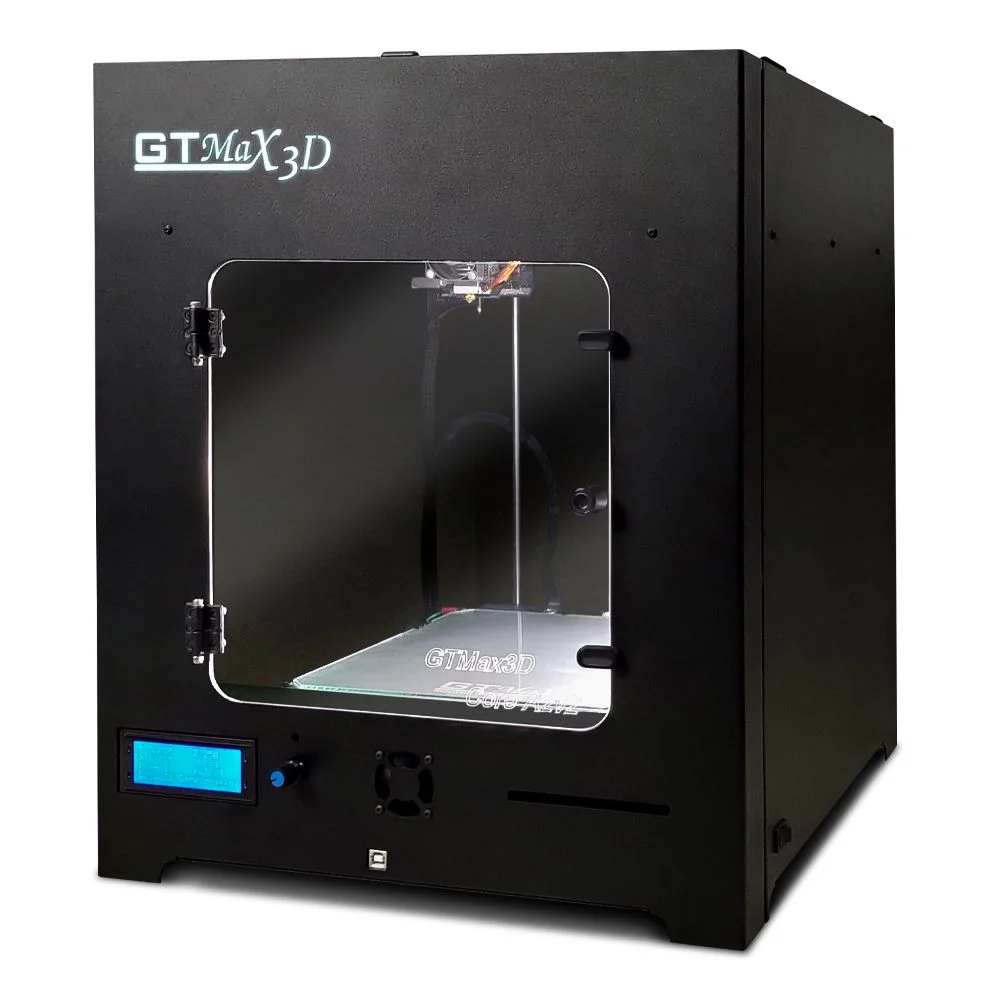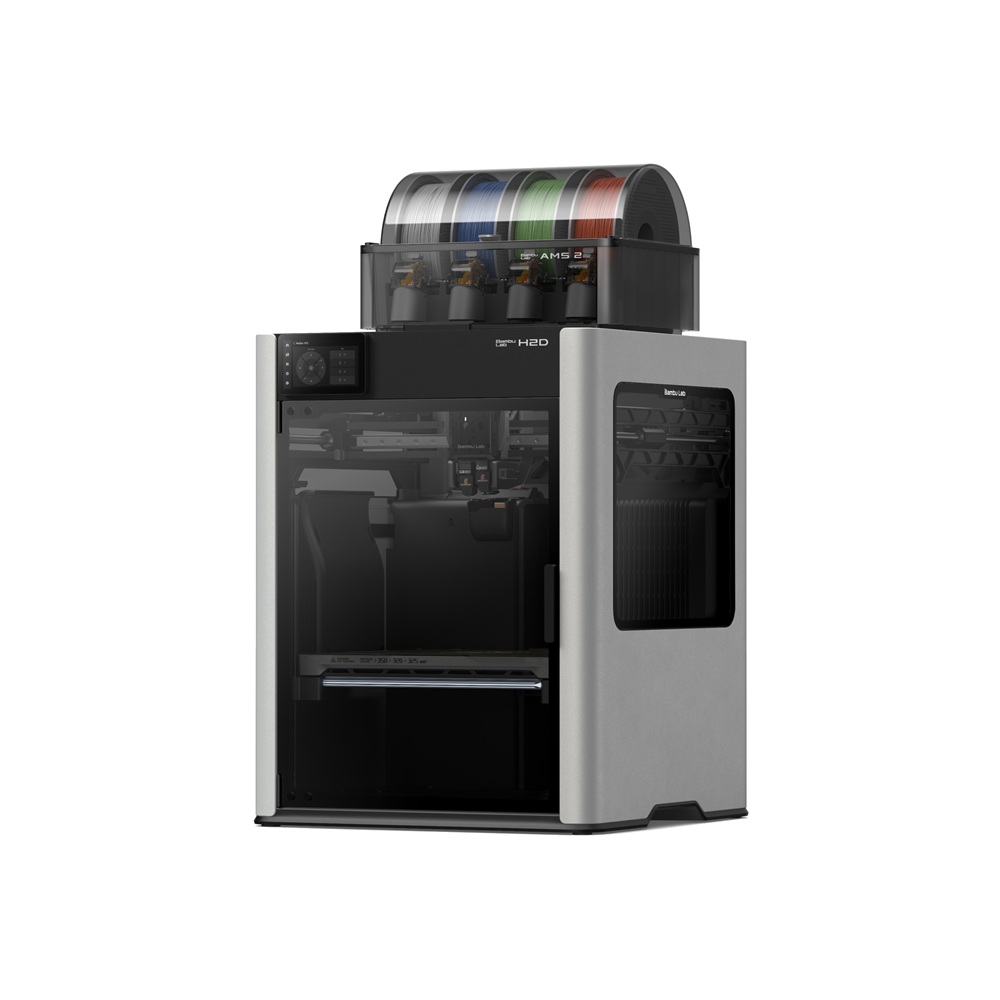Compare Core A2V2 vs H2D
Comparison between the best 3D printers
Choose the best 3D printer at the best price. The cheapest 3D printers are here.
Buy a 3D printer here with 3D Fila.
 |
 |
|
| Model | Core A2V2 |
H2D |
| Printing Material | Filament | Filament |
| Buy Filament for GTMax Core A2V2 | Buy Filament forBambu Lab H2D | |
| Estimated price | $684,00 | $1899,00 |
| Manufacturer | GTMax | Bambu Lab |
| Release Year | 2019 | 2025 |
| Print Volume [mm] | 220x220x240 | 350x320x325 |
| Printer Size [mm] | 425x460x512 | 492x514x626 |
| Weight [kg] | 42,3 | |
| Power Loss Recovery | YES | YES |
| Enclosed printer | YES | YES |
| Bed Leveling | Automatic | |
| Filament End Sensor | YES | YES |
| Bed type | Heated | Heated |
| Power supply system | Bowden | Direct Drive |
| Standard nozzle | 0,4 | 0,4 |
| Maximum Nozzle Temperature [°C] | 295 | 350 |
| Maximum Bed Temperature [°C] | 135 | 120 |
| Maximum printing speed [mm/s] | 150 | 600 |
| Filament holder | YES | YES |
| Camera for supervision | NO | NO |
| Recommended filaments | PLA, PETG, Tritan, Flex, ABS | PLA, PETG, ABS, ASA, TPU, PVA, Nylon (PA) |
| Recommended slicers | Cura, Simplify, Slic3r, IdeaMaker | Bambu Studio |
| Maximum Resolution [mm] | 0,05 | 0,01 |
| Processor | ||
| Display | Mono | Touchscreen 5'' |
| Power Supply | ||
| Connectivity | SD / USB | Wifi, Bambu bus, Cartão SD |
| Operating systems | Windows, Mac, Linux | Windows, Mac, Linux |
| Date of registration in the system | 2022-11-12 | 2025-03-31 |
| Release date | 2019 | 2025 |
| Extra features | The GTMax3D ProCore A2v2 is a compact and robust 3D printer with a printing area of ??220 x 220 x 240 mm. It offers high print quality, ranging from 0.05 mm to 0.32 mm. Its features include automatic filament detection and changing, travel speed of up to 300 mm/s, and a heated aluminum bed with a glass top. It has automatic bed leveling with 16 points and an all-metal hotend that reaches up to 298°C. The printer has a carbon steel frame with electrostatic painting, is automatic bivolt and has connectivity via USB and SD card. The Bowden system and core xy kinematics complete its advanced features. | Bambu Labs H2D combines high-speed 3D printing with a chamber heated up to 65 °C, dual extrusion with automatic nozzle switching, an AMS for filament drying and exchange, and AI sensors that detect failures. It offers optional laser and digital cutting capabilities, features intelligent calibration through computer vision, vibration control, enhanced fire safety, and real-time camera monitoring. |
| Support for multiple colors and materials (AMS and CFS) | NO | YES |
Notes * |
||
| Cost-benefit | 6 / 10 | 7 / 10 |
| Hardware | 2.5 / 10 | 8 / 10 |
| Tela | . | . |
| Print volume | 3 / 10 | 4 / 10 |
| Performance | 1 / 10 | 5 / 10 |
Conclusion |
| In conclusion, the choice between the Core A2V2 and the Bambu Lab H2D 3D printers largely depends on specific user needs and budget considerations. The Core A2V2 stands out for its affordability, compact size, and decent print quality tailored for hobbyists and those new to 3D printing. It offers reliable features such as automatic bed leveling, filament sensors, and a robust construction, making it a solid choice for basic printing tasks. On the other hand, the Bambu Lab H2D is positioned as a high-performance machine designed for more advanced users or professionals. With significantly larger print volume, faster print speeds, and capabilities for multiple materials and dual extrusion, it is better suited for complex projects and demanding applications. The latest technology and advanced features such as AI failure detection and intelligent calibration make it a future-proof investment. Ultimately, for those seeking a cost-effective entry into 3D printing, the Core A2V2 is an adequate choice. However, users requiring more extensive functionality, higher efficiency, and advanced features may find the Bambu Lab H2D worth the higher price. |

